Chemical Physiology T32 Training
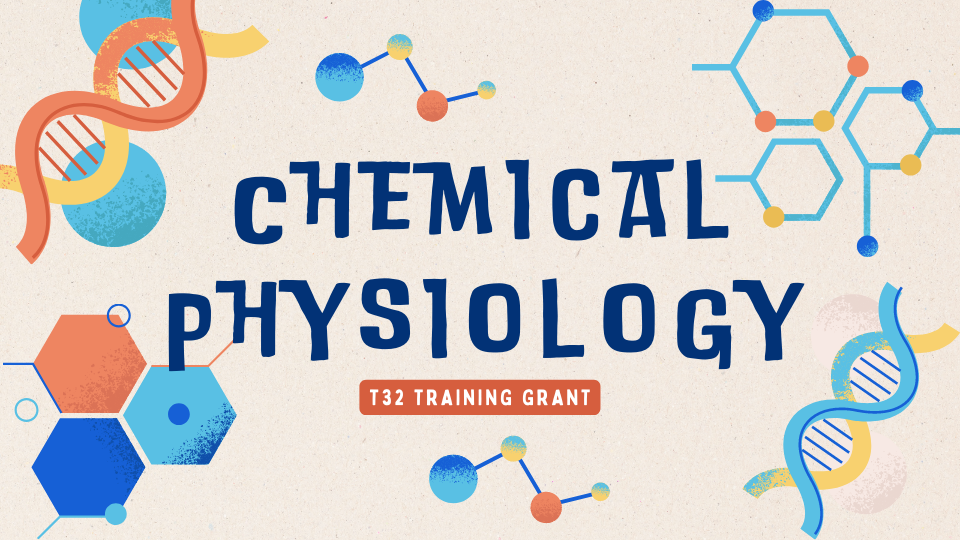
Program Overview
The goal of the OHSU Chemical Physiology T32 program is to produce a new generation of scientists who will elucidate the fundamental mechanisms that undergird health and disease by applying chemical biology tools to understand physiology, pathophysiology, and medicine. A unique aspect of this training program is that students receive training in both chemistry and physiology in a medical school environment.
We thank you for your interest and encourage you to apply for next year!
The application window for the FY26 CPT T32 Fellowship will open in the spring of 2025.
Opportunity for the Chemical Physiology T32 Fellowship FY25 closed on Friday, May 17, 2024
Eligibility Requirements
Applicants must be NIH training grant eligible (US Citizen or Green Card holder).
- Applicants must be finishing their 1st, 2nd or 3rd year of graduate training.
- Applicants must be actively engaged in research at the chemistry-biology interface and working in the laboratory of a Chemical Physiology T32 appointed faculty member.
- Applicants must be members of the NGP or PBMS program at OHSU.
- MD/PhD students are not eligible for this T32 fellowship.
- Current T32 fellows (in their first year of support) can apply for a renewal of their support for a second year.
- Renewal for a second year of T32 support (for students starting their third or fourth year of graduate school) will be dependent on research progress and participation in all training activities.
Please attach the following documents (in a single PDF file) through our application portal.
Cover Letter: 0.5 page
The applicant must submit a letter that verifies that they will submit a predoctoral fellowship application (NIH NRSA or equivalent) within one year from the end of the training period. The letter must acknowledge that the student will participate in all T32 activities.
Renewals: The cover letter should briefly describe prior participation in T32 activities, and a list of fellowships applied for during the first year of funding.
Training Plan: 1 page
The training plan should be prepared collaboratively between the applicant and the mentor.
**An example training plan is available upon request.
- The training plan should be personalized for the current student applicant.
- Describe how the student would benefit from this T32 training program at the interface of chemical biology and physiology.
- Do not include standard coursework, seminars, and other degree requirements.
- Describe how the mentor will mentor the student (frequency, duration, and setting).
- Describe the student’s specific training needs (e.g., techniques, coursework, networking opportunities) and how those needs will be met.
- Describe plans for how the mentor will support and assist the student with career development.
- Address how the mentor will work with the student to ensure data rigor and reproducibility and responsible conduct of research.
- Include a statement of how you address and promote safety and inclusiveness in the lab.
- Include a strategy for conflict resolution for the mentor, student, or other lab members.
-
Renewals: The training plan should be updated to indicate the training completed in Year 1 and training to be completed in Year 2.
Fellowship Application: 6.5 pages
• Research Plan: 2 pages (11-point font; with citations and figures)
A successful research plan will explicitly address how the project fits within the purview of this T32 training grant (i.e., includes both chemical biology and physiology). The research plan must be written by the student with input from the mentor. It should include a brief description of the thesis project, including:
- Abstract: The proposed project, its impact (“big picture”), and the hypothesis.
- Introduction/Specific Aims: Goals of the project and sufficient background to put the proposed work in context of the research area.
- Figure or scheme (encouraged): Representation of the goals of the project. Preliminary data not required.
- Rigor and Reproducibility: A section on data collection and analysis, with a description of how rigor and reproducibility will be ensured. This section should be prepared with input from the mentor.
- Explanation of how the proposed research fits into the theme of chemical physiology and the goals of the OHSU Chemical Physiology T32 training grant.
• Career Goals: 0.5 page
This section should include a statement of the student’s career goals and how the student will benefit from the OHSU Chemical Physiology T32 training program. This section can include plans to attend conferences or workshops. If the student proposes to complete an internship outside of OHSU then that should be described here.
• NIH Biosketch (Predoctoral Fellowship): 4 pages
The NIH Biosketch includes 4 sections (A-D). Section A should focus on how the student’s research plans and goals align with this training grant. For example, this section might describe prior experience or expertise in chemical biology or physiology and how that experience will be used during the T32 training period.
A template can be found through this NIH link: Use the pre-doctoral template:
http://grants.nih.gov/grants/forms/biosketch-blank-fellowship-format-re…
Mentoring Plan: 7 pages
• Mentor’s letter: 2 pages
The letter of support should be written by the mentor and include the following information:
- A description of how the student is a good match for this T32, which focuses on training scientists to work at the interface of chemical biology and physiology.
- A statement that the Research Plan was written by the student.
- Assessment of the student’s research abilities and strengths.
- A description of the regional or national conference the student will attend during the training period (no later than the end of year 3 in graduate school). Include how conference attendance will benefit the student.
- Acknowledgement that the student will submit an individual fellowship application (NIH or similar) by the end of their third year of graduate school. If the fellowship deadline is in the fall, then submission should occur no later than the fall quarter of the student’s 4th year in graduate school.
- Description of mentor’s participation in RCR training.
If the mentor has not participated in the past 2 years, then the mentor will need to participate during the next (Fall quarter) session. - Mentor’s commitment to enhancing diversity, equity, and inclusion in graduate education.
- Renewals: A brief description of progress during Year 1 and plans for Year 2. The mentor should justify why the funding should be renewed.
- Include a timeline for ensuring that the student attends a national meeting and submits a fellowship application by the end of their 3rd year of graduate school, or a clear justification for finishing those things by the fall quarter of year 4.
- Confirm mentor’s participation in RCR training.
• Mentor’s NIH Biosketch: 5 pages
In the personal statement (Section A), include a description of the mentor’s training record and outcomes. Describe any formal mentor training completed.
Completed applications will be reviewed in May by a panel comprised of T32 training faculty and at least one student from PBMS or NGP. Applications will be evaluated based on the following criteria:
• Compatibility of student’s training and career goals with the NIGMS T32 mission.
• Quality of the research plan.
• Previous experience of the applicant.
• Mentor’s commitment to training and trainee career development.
• Renewal applications: research progress and participation in T32 activities during the first year of funding will be considered.
The content of all applications will be kept confidential.
_________________________________________________________________________________________________________________________________________________________________________________________________
Renewal for a second year of T32 support will be dependent on research progress and participation in all training activities.
Students on this T32 must complete the following courses:
- Chemical Biology Innovators
- Chemistry & Physiology Journal club (fall)
- The Practice and Ethics of Science
- Principles of Physiology or Neurophysiology
- Drug Discovery & Develop. or Receptor Pharmacology
Faculty Mentors
Current Trainees
Alec Griffith is a third-year graduate student in Dr. Fikadu Tafesse's lab in OHSU's department of Molecular Microbiology and Immunology. He is studying the role host-cell lipid synthesis plays in the trajectory of Mycobacterium tuberculosis infection and how the bacterium manipulates host lipids for its own benefit. Many of these tests are accomplished through use of multifunctional lipid probes with help from the lab of Carsten Schultz. He is grateful to be invited back for another year of training on the T32 to continue to learn about the ways chemical physiology and biology can be used in the context of microbiology and immunology.
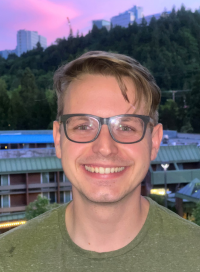
Varik Harris is a first-year graduate student studying under Dr. Carsten Schultz in the Department of Chemical Physiology and Biochemistry. He is studying the relationship between certain diacylglycerol and cells found in the islets of Langerhans in the pancreas. His research uses photo-caged lipid compounds and bifunctional lipid derivatives with alkyne and diazirine groups for photocrosslinking and click chemistry. He believes the T32 will be “instrumental in promoting networking opportunities and helping master a wide range of research skills.” Varik is honored to have been selected for the training grant and is looking forward to his career’s growth as a result.

Shannon Hu is a third-year Neuroscience Graduate Student in the lab of Dr. Steve Reichow in the department of Chemical Physiology and Biochemistry. She is using bifunctional UV-crosslinkable lipids to investigate the role of lipids in mediating pH-gating of large pore Connexin-46/50 gap junctions. The T32 will provide Shannon with the support and training needed to accomplish her multidisciplinary projects in structural and electrophysiology biology, as well as offer critical networking opportunities to open new pathways into her future career.
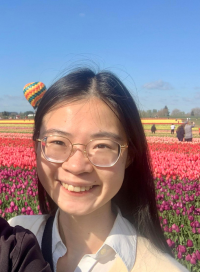
Tatum Weishaar is a third-year student in the Graduate Program in Biomedical Sciences (PBMS) where she is completing her thesis in Dr. Braden Lobingier's lab in the Department of Chemical Physiology & Biochemistry. Tatum is investigating the membrane trafficking of the D1 dopamine receptor and is working to uncover the sorting motif(s), pathway(s), and mechanism(s) responsible for D1 dopamine receptor's recycling ability. The Chemical Biology T32 has granted Tatum the training and opportunity to learn about and utilize chemical biology tools and techniques to investigate these complex cellular processes.

Past Trainees
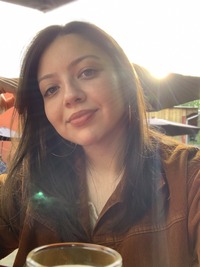
Sarahi Garza is a fourth-year Neuroscience Graduate Student in the lab of Dr. James Frank in the department of Chemical Physiology and Biochemistry. Sarahi uses photoswitchable THC compounds to investigate how THC affects the brain’s reward circuitry with high spatial and temporal precision. Sarahi’s T32 funding has allowed her to pursue career development opportunities such as attending the National Science Policy Network Symposium. She has also enjoyed engaging with chemical biology and has fun being challenged to read about work outside the scope of her research.
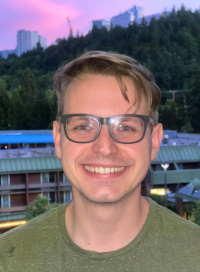
Alec Griffith is a second-year graduate student in Dr. Fikadu Tafesse's lab in OHSU's department of Molecular Microbiology and Immunology. He is studying the role Sphingolipid synthesis plays in the trajectory of Mycobacterium Tuberculosis infection. To accomplish this, he uses trifunctional lipids developed by Carsten Schultz's lab and Scotty Farley. He is excited for the training opportunities provided by the T32 to expand on his knowledge and experiences in chemical physiology and how it intersects with the fields of microbiology and immunology. He is also looking forward to the networking opportunities provided by the grant.

Jed Syrenne is a third-year Neuroscience Graduate Student in the labs of Dr. Swetha Murthy and Dr. Steve Reichow. He uses photoswitchable lipids to probe the gating mechanisms of mechanically activated ion channels. The T32 has provided him with the resources and training necessary to answer questions critical to understanding the physiology and pathophysiology of mechanically activated ion channels.

Tatum Weishaar is a second-year student in the Graduate Program in Biomedical Sciences (PBMS) where she is completing her thesis in Dr. Braden Lobingier's lab in the Department of Chemical Physiology & Biochemistry. Tatum is investigating the membrane trafficking of D1 and D2 dopamine receptors and is working to uncover the motif(s), pathway(s), and mechanism(s) responsible for D1 dopamine receptor's recycling ability. The Chemical Biology T32 has granted Tatum the training and opportunity to learn about and utilize chemical biology tools and techniques to investigate these complex cellular processes.
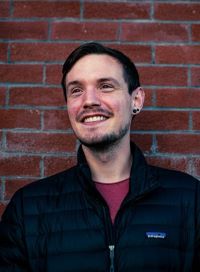
Michael Crawford is a second-year graduate student in the lab of Dr. Fikadu Tafesse in the department of Molecular Microbiology and Immunology. His focus is exploring the role of sphingolipids in flavivirus replication, utilizing lipid probes created by Scotland Farley from the Schultz lab. The T32 training grant has significantly enhanced his training in the field of chemical biology and allowed him to network with scientists such as those at the Pacific Northwest National Laboratory (PNNL) to explore PhD career opportunities.

Sarahi Garza is a third-year Neuroscience Graduate Student in the lab of Dr. James Frank in the department of Chemical Physiology and Biochemistry. Sarahi uses photoswitchable THC compounds to investigate how THC affects the brain’s reward circuitry with high spatial and temporal precision. The T32’s training has increased Sarahi’s appreciation for the history of chemical biology and ongoing efforts in the field to innovate the way we ask neurobiological questions.